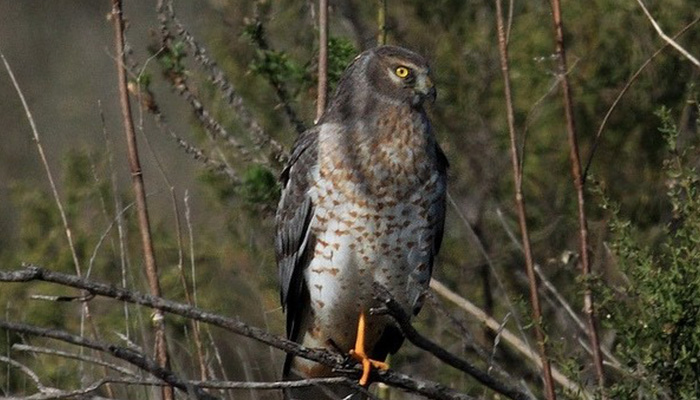
English: Northern Harrier, Hen Harrier, Marsh Hawk
Russian: Полевой лунь
German: Kornweihe
French: Busard
Saint-Martin
Mongolian: Саарал хулд, Цагаан элэгт
Japanese: ハイイロチュウヒ(Haiiro-chuhi)
Body Length: 42-50 cm
Wing span: 100-121 cm
Breeding season: May-September
Egg number: 4-6 (occasionally 8)
Egg colour: Blueish-white, rarely blotched
with light brown.
Brood: 1 per year
Global Status: Least concern
Regional Status: Least Concern
Habitat: Open areas in river and lake valleys
with reed bed and tall sedge grasses. Males occasionally have 2-3 females but
this forces some female in mid-air. On migration, it occurs singly, or in small
numbers in open country.
Identification:
Recognized as a harrier by long wings and tail, and low flight with wings
raised in shallow V when gliding. Separated from Marsh Harrier by plumage,
lighter build and flight, from the two narrow-winged species by shorter and
more ample ‘hand’ with 5 primary long, and broader ‘arm'.
- Adult
♂: Wing-tips black, underparts white with blue-grey head and breast sharply set
off, darkish trailing edge to underwing; upperparts blue-grey with white
uppertail-coverts.
- Adult
♀: Upperparts brown with white uppertail-coverts, inner wing with variable
yellowish panel; underparts buffish-white, streaked brown.
- Juvenile:
Distinguished from adult ♀ by more rufous-yellow underparts with fewer streaks,
especially on belly, and more prominent and more rufous panel above on inner
wing, not so yellowish and indistinct; pale tips to greater upperwing-coverts.
Food:
Small rodents, small birds and fledglings of passerines in open areas.